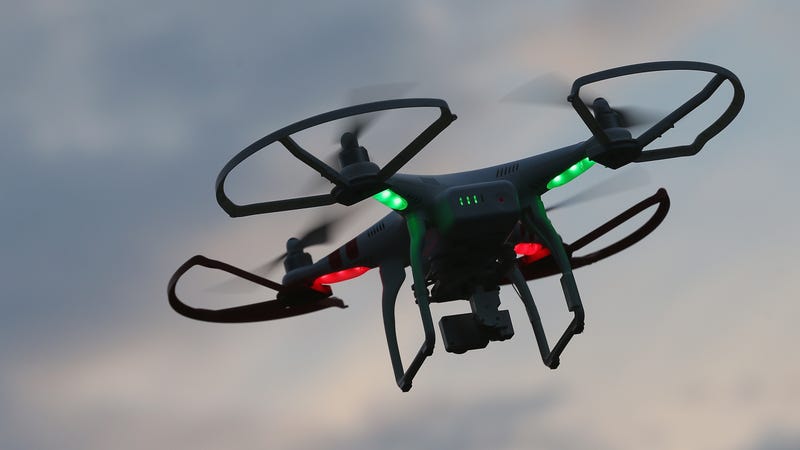
An FBI hostage rescue team ran into some unexpected obstacles while conducting a raid last winter when a criminal gang unleashed a swarm of drones to disrupt the operation and obscure the view of agents conducting the mission from an elevated observation post.
According to Defense One, the incident—which took place outside of an undisclosed major US city—was recounted by Joe Mazel, the head of the FBI’s Operational Technology Law unit, at the AUVSI Xponential conference in Denver, Colorado. It’s just the latest example of criminals leveraging drones and other technology to fluster law enforcement.
Mazel told attendees of the conference that a group of drones made a series of “high-speed, low passes at agents in the observation post” in an attempt to flush them out of from their position. “We were then blind,” Mazel said. He admitted the swarm made the operation much more difficult and “presented some challenges.”
While the case is considered “law enforcement-sensitive,” which prevents many of the details from being shared publicly, Mazel did provide some detail s to how the situation happened.
Defense One reported the chief of the operational tech unit for the FBI said the suspects carried the drones in backpacks in anticipation of law enforcement’s arrival. Once the FBI showed up, the criminals unleashed the drones and buzzed the agents attempting to conduct the raid.
In addition to obstructing the view of the hostage rescue team members, the criminals also used camera-equipped drones to track the location of agents on the ground. The drones provided a live video feed of the action from overhead, which members of the gang were able to watch in real time on YouTube.
“They had people fly their own drones up and put the footage to YouTube so that the guys who had cellular access could go to the YouTube site and pull down the video,” Mazel told the conference.
Drones used in this matter present something of a worst-case scenario for law enforcement officers. The technology is relatively cheap, commercially accessible, and provides some pretty powerful tools for disruption, transportation, and surveillance in a small, portable package.
Police have warned in recent years that drones have been used to surveil buildings and homes being targeted by robbers. Smugglers have started to utilize the technology to move contraband across borders. Criminals have even found ways to weaponize drones with explosives and other harmful materials.
Of course, law enforcement isn’t exactly innocent on this front either, as they have their own questionable intentions for the technology. Local and federal agencies have been all too happy to try to push for drones that can be used to do everything from intercepting cell phone signals to spying on citizens without a warrant to killing people.
Lawmakers will have an opportunity to help curb some of the criminal activity committed with drones in an upcoming Federal Aviation Administration reauthorization bill. A current version of the legislation would make it illegal to weaponize consumer drones and would require drone pilots operating the devices outside of their line of sight to remotely identify themselves so law enforcement can connect the device to a person. Those rules will only work if the FAA actually enforces them, and the agency has been pretty bad at that so far.
.png)

No comments:
Post a Comment